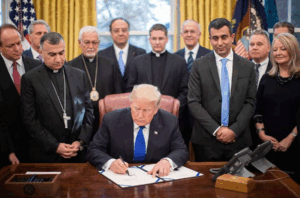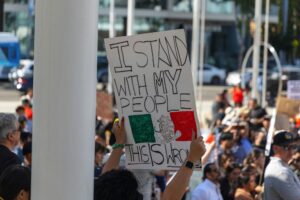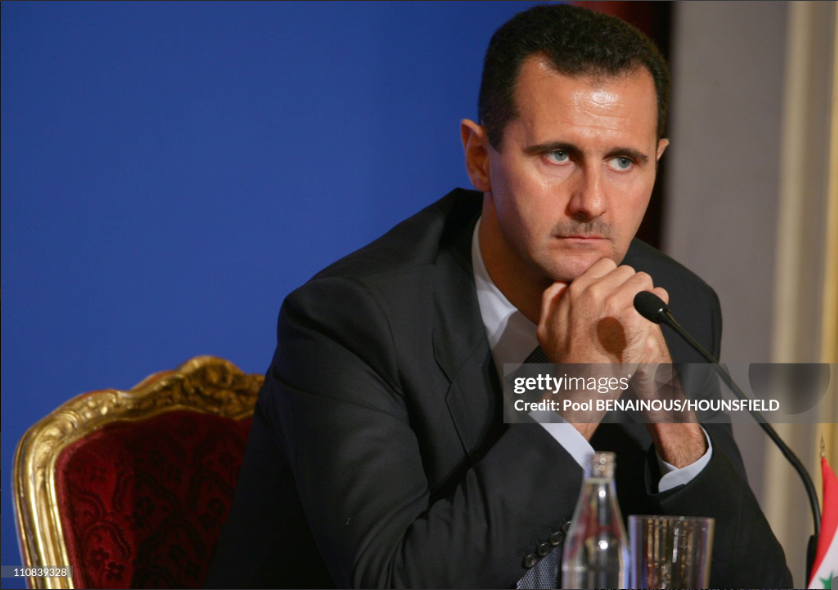Hafez El-Assad : the father that started it all.
Bachar El Assad was born on September 11th, 1965. At the time, his father General Hafez El-Assad (El-Assad means the Lion in Arabic) rose through the Ba’ath political party (1) mixing Arab nationalism, socialism and anti-imperialist interests. On November 13th, 1970, Hafez El-Assad organized a bloodless military coup which led him to become President of Syria. This event is best known as the “Corrective Movement”. El-Assad’s military dictatorship lasted 29 years. During these years the syrian population endured a worsening of the economy, food crisises, the enforcement of a personnality cult, human rights violations and massive killings. Tens of thousands of Syrian civilians were killed during the Hama massacre (casualties = 40, 000 deaths)
Bachar El-Assad’s regime : from doctor to dictator.
When Hafez El-Assad died in 2000, his son Bachar succeded him. After medicine studies in London and excercising his profession as an ophthalmologist, Bachar El Assad continued the legacy of his father – a highly personalised dictatorship with power concentrated in the armed forces.
For example, on August 21st, 2013, a chemical attack was launched on the suburbs of Damas. The concerned zone that was controlled by Bachar’s political opponents. On social media, videos of men, women and children were published, showing that 1 500 innocent victims had died. This attack was conducted by Bachar El-Assad’s regime and it illustrates the violence of his regime.
The Syrian civil war
In 2011, popular discontent with the Ba’athist party led to large-scale protests across Syria. This was part of the wider Arab Spring movement in the region. In March, various armed rebel groups such as the Free Syrian Army and Hayat Tahrir al-Sham (HTS) (2) began forming across the country. This marked the beginning of a strong political opposition to B. Al Assad. By mid 2012, the protests had turned into a civil war between Assad’s regime and a coalition of rebels. The civil war showed a regime willing to industrialise the detention, torture and murder of huge numbers – including up to 13,000 killed between 2011 and 2015 at Sednaya prison, known as the “Human Slaughterhouse”.
After Al-Assad : an uncertain future for Syria.
Last 8th of december, the syrian population celebrated the end of the Al-Assad dictatorship. However, most cities remain destroyed due to the war. The future of Syria is still uncertain and humanitarian need remains high. 16,7 million people are estimated to be in need. It is the highest estimation since the 2011 crisis. Food inflation has been high and the return of refugees will be rough considering the extensive damage syrian schools, roads and hospital have suffered. Politically, the rebel group, HTS, which was involved in the fall of Al-Assad has announced a transitional government. Opposition groups continue to vie for territorial control. In the meantime, HTS and SNA are taking areas controlled by Syrian Democratic Forces (SDF), including important oil fields.
Politically, the former parliament was dissolved and the Syrian Constitution of 2012 was freezed. A political shift is now taking place and a transitional president was named : Ahmed Al-Charaa, founder of HTS, one of the main rebel groups. He was a key actor in the falling of the Assad regime. Even though Syria is slowly getting back to a stable state, its future remains uncertain and the reconstruction of the country (both politically and in the infrastructures) might take a while.
To conclude…
The fall of Bachar El-Assad marks the end of an era defined by dictatorship, war, and widespread suffering. However Syria’s political instability, humanitarian crises, and the challenges of rebuilding a war-torn nation are still ahead. While the departure of Assad is a pivotal moment in history, it does not immediately bring peace or prosperity. The transitional government faces the task of uniting a fractured country, restoring basic infrastructure, and addressing the needs of millions.
(1) Ba’athist party : Ba’athists contend that socialism is the only way to develop modern Arab society and unite it. The two Ba’athist states which existed—Iraq and Syria—attempted to prevent criticism of their ideology through authoritarian means of governance.
(2) HTS and the Free Syrian Army are one of the main rebel groups that were opposed to the Al-Assad dynasty.










